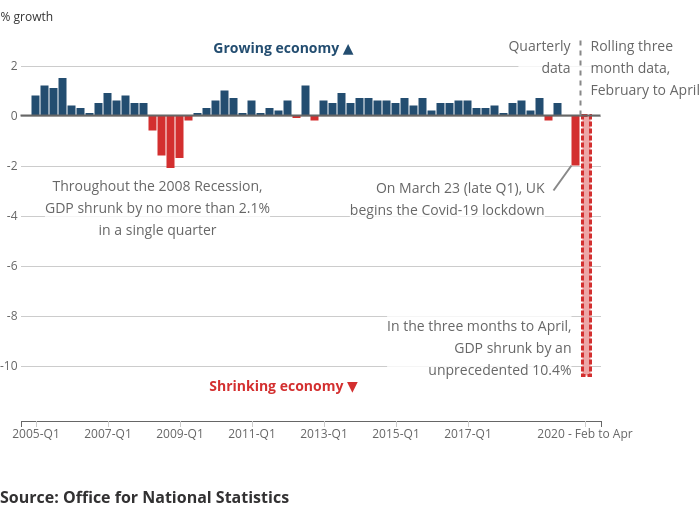In low- and middle-income countries (LMICs), economic downturns can lead to increased child mortality by affecting dietary, environmental, and care-seeking factors. This study estimates the potential loss of life in children under five years old attributable to economic downturns in 2020. We used a multi-level, mixed effects model to estimate the relationship between gross domestic product (GDP) per capita and under-5 mortality rates (U5MRs) specific to each of 129 LMICs. Public data were retrieved from the World Bank World Development Indicators database and the United Nations World Populations Prospects estimates for the years 1990-2020. Country-specific regression coefficients on the relationship between child mortality and GDP were used to estimate the impact on U5MR of reductions in GDP per capita of 5%, 10%, and 15%. A 5% reduction in GDP per capita in 2020 was estimated to cause an additional 282,996 deaths in children under 5 in 2020. At 10% and 15%, recessions led to higher losses of under-5 lives, increasing to 585,802 and 911,026 additional deaths, respectively. Nearly half of all the potential under-5 lives lost in LMICs were estimated to occur in Sub-Saharan Africa. Because most of these deaths will likely be due to nutrition and environmental factors amenable to intervention, countries should ensure continued investments in food supplementation, growth monitoring, and comprehensive primary health care to mitigate potential burdens.
https://journals.plos.org/plosone/article?id=10.1371/journal.pone.0263245
